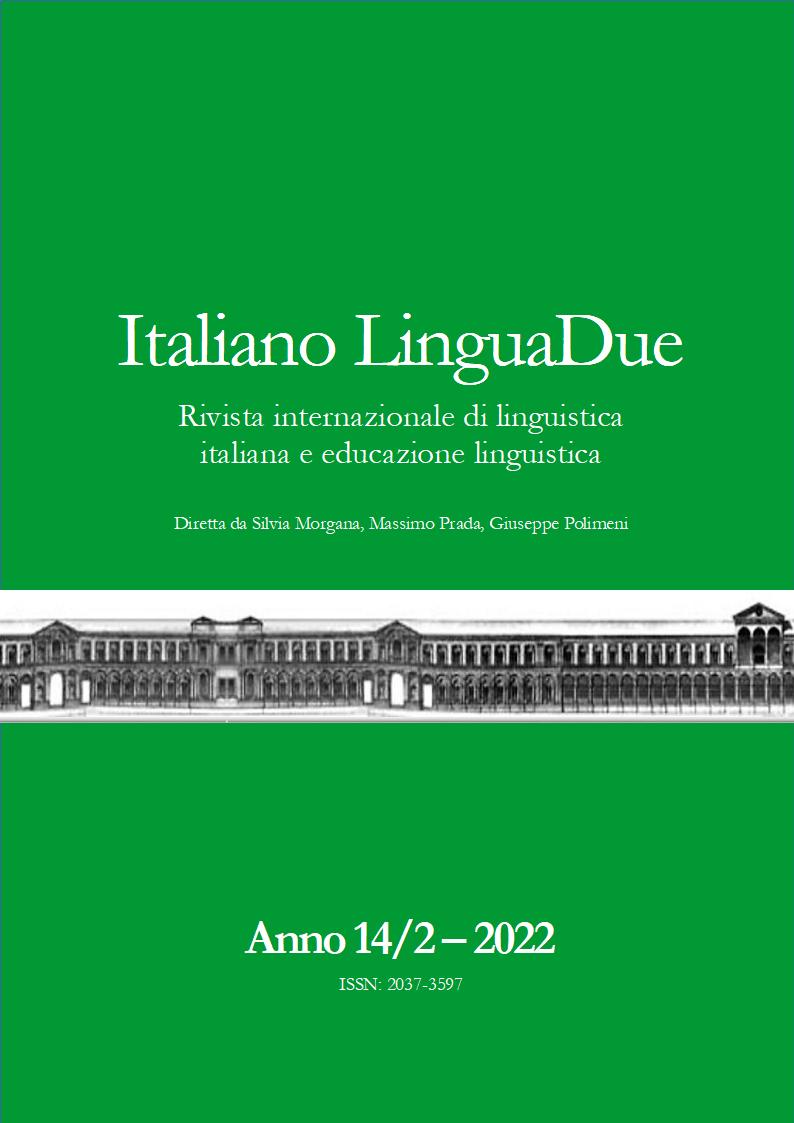LETTURE MULTIMODALI PER L’EDUCAZIONE LINGUISTICA
DOI:
https://doi.org/10.54103/2037-3597/19651Abstract
L’articolo propone di introdurre l’uso dei testi multimodali nei curricula di educazione linguistica nella scuola secondaria, soprattutto in quella di secondo grado. L’uso di documenti di questo tipo presenta numerosi vantaggi: consente alla scuola di formare all’analisi, alla produzione e all’uso critico di questi artefatti sempre più pervasivi, rispondendo così alle sollecitazioni che provengono dalla Comunità Europea e contribuendo alla formazione professionale e civile dei degli studenti; rende possibile arricchire il patrimonio di modelli testuali in possesso degli studenti, affiancando a quelli letterari solidamente impiantati nei sillabi e a quelli professionali che vi sono in parte entrati da alcuni anni, testi nuovi per concezione, particolari per dinamismo e fondamentali per impatto socioculturale e per la forza modellizzante; promuove la descrizione scalare delle competenze di ricezione e di produzione in un campo ancora poco esplorato. Il contributo si articola in tre sezioni: la prima e la seconda forniscono informazioni sui testi neomediali e modelli per la loro interpretazione; la terza propone attività che implicano interazione telematica. I primi paragrafi, dunque, affrontano alcuni concetti fondamentali per l’analisi dei testi multimodali e descrivono sommariamente le caratteristiche dei testi multimodali, soffermandosi con particolare attenzione su quelli di un ben noto ambiente di condivisione di risorse audio e video; quelli centrali propongono la lettura multimodalmente orientata di alcune pagine tipologicamente differenti del servizio; l’ultimo suggerisce un esercizio applicativo.
Multimodal readings for language education
The article proposes to introduce the use of multimodal texts in language education curricula in secondary school, especially in upper secondary school. The use of documents of this type has numerous advantages: it allows the school to train in the analysis, production and critical use of these increasingly pervasive artefacts, thus responding to the to the solicitations that come from the European Community and contributing to the professional and civil training of students; it makes it possible to enrich the heritage of textual models in the possession of students, combining the literary ones solidly implanted in the sillabuses and the professional ones that have partly entered them some years now, with those of texts new in conception, particular for their dynamism and fundamental for their socio-cultural impact and for their modeling force; it promotes the scalar description of reception and production skills in a field that is still sparely explored. The paper is divided into three sections: the first and the second provide information on neomedial texts and models for their interpretation; the third proposes activities that involve telematic interaction. The first paragraphs, therefore, address some fundamental concepts for the analysis of multimodal texts and briefly describe the characteristics of multimodal texts, focusing on those of a well-known environment for sharing audio and video resources; the central ones propose the multimodally oriented reading of some typologically different pages of the service; the last suggests an application exercise.




